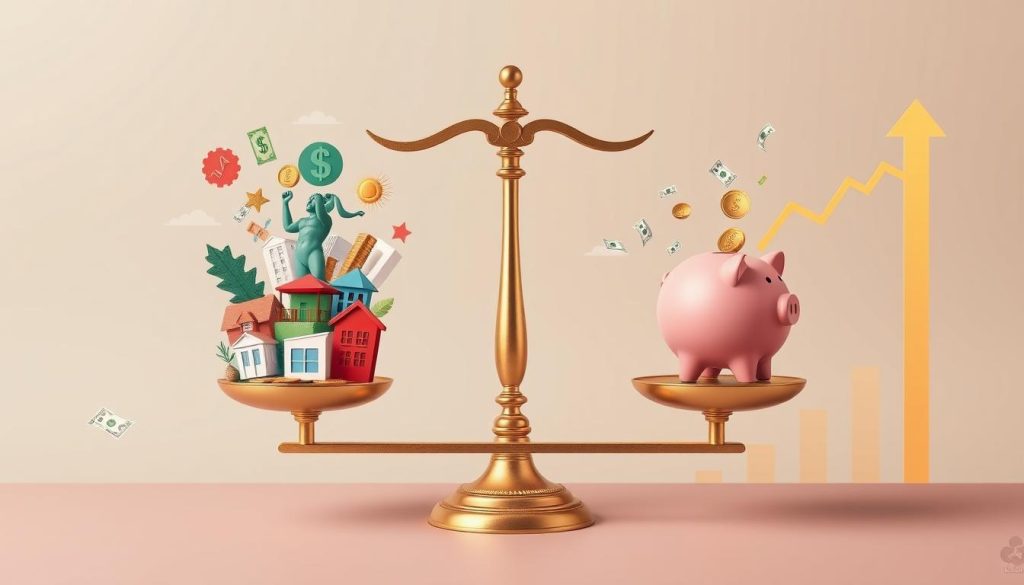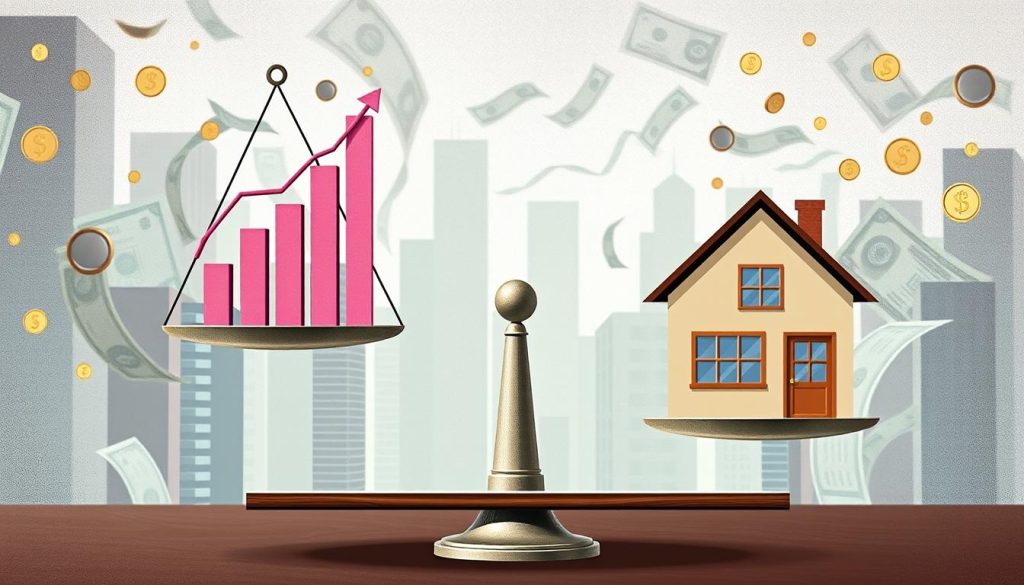The cost of a movie ticket shows inflation’s impact on investments and savings. It rose from $6.41 in 2005 to $9.16 in 2019, and then to $16.29 by 2022. This highlights how our purchasing power is gradually decreasing. This issue is crucial for everyone, especially retirees, to understand and address.
The increase in Social Security payments, including a significant 8.7% rise for 2023, may not keep up with rising costs, like healthcare. This situation calls for smart planning to protect one’s financial health. Options include adjusting to Treasury Inflation-Protected Securities (TIPS) or investing in stocks and precious metals.
In the United States, the goal has been a 2% annual inflation increase after 2008 to help the economy. However, countries like Argentina face serious issues with hyperinflation in 2023. Facing increasing costs and uncertain returns, it’s crucial to have a financial plan that keeps ahead of inflation.
Creating a plan is vital, as the average returns on savings accounts might not keep up with costs. Yet, options like Jump-Up Certificates in certificates of deposit can help fight inflation. In times of inflation, mixing passive investment and spreading one’s money across different assets can help. Investing in commodities, stocks, and real estate is often recommended to protect against inflation.
Finally, truly understanding inflation and its effect on our finances is essential. It’s not just theory but a key part of protecting our financial future. Knowing how savings, investments, and inflation interact helps us discuss and find strategies for managing and growing wealth despite economic changes.
Understanding the Mechanics of Inflation
Inflation affects everyone and every business, shaping our economy and personal money matters. It happens mainly when the demand for goods and services surpasses the available supply. This issue causes prices to go up, making our money worth less.
The Consumer Price Index (CPI) keeps track of the price changes for a set of goods and services. Economists and policymakers use this index to keep an eye on inflation. This helps them make important decisions, like changing interest rates or adjusting the cost of living.
Inflation and interest rates are closely connected. For instance, the Federal Reserve controls inflation by changing interest rates. This affects how much it costs to borrow money and how much people spend. High interest rates can slow down inflation by making people spend and borrow less.
Seeing inflation in two ways is key: it can lower the value of money and savings but can also make debts cost less in real terms. That’s why people and businesses think about investments like Treasury Inflation-Protected Securities (TIPS) or real estate. These can help protect against the downside of inflation.
In conclusion, understanding inflation’s impact is vital for handling our economic and financial well-being. By watching the CPI and reacting to changes in interest rates and cost of living adjustments, we can better manage the challenges inflation brings.
Inflation’s Impact on Investments and Savings
Understanding how inflation affects personal finance is key to protecting your investments. The rising cost of goods makes it crucial to preserve the value of your money. This includes choosing the right mix of assets, balancing potential risks and rewards in different economic conditions.
Mitigating Purchasing Power Erosion
To fight inflation’s effects, diversifying your portfolio is essential. Spread your investments across various asset classes, like stocks and bonds. Treasury Inflation-Protected Securities (TIPS) are particularly effective. They grow in value with inflation, keeping your investment’s buying power strong.

Assessing the Real Value of Returns
Diversification is crucial for measuring the true value of your returns. TIPS, for example, adjust for inflation, providing a real return. This strategy protects your money from inflation and market risks. It’s a smart way to grow and preserve your capital in uncertain times.
Dealing with inflation requires a strategic investment approach. It’s important to diversify, include assets like TIPS, and keep a close eye on your portfolio. By being adaptable and using solid financial tools, you can protect and even improve your finances despite inflation.
The Influence of Interest Rates and Cost of Living
The landscape of personal finance is always being shaped by interest rates and the cost of living. These factors are key to understanding wealth preservation and purchasing power. With the cost of living going up, for example by 6.2% in 2022 according to the Consumer Price Index (CPI), families are finding it harder to keep their lifestyle the same. This situation makes it tricky for people to save money and to check how inflation affects their investments and savings.
Interest rates, which are set by the Federal Reserve, have a big effect on the economy by changing borrowing costs. When inflation rises, higher interest rates help slow down economic activity and control inflation. For example, the Federal Reserve raised the federal funds rate to about 5% in early 2023 as a way to handle inflation, which was at 3.1% at the end of January 2024. This move directly influences the returns people get on investments like bonds and savings accounts. It impacts how well one can keep up their wealth preservation efforts.
Those who depend on fixed income investments are hit hard as inflation reduces the real value of what they earn. For instance, a bond with a 5% interest rate might actually give a real return of only 2% if inflation is at 3%. This situation hurts the real earnings and purchasing power of the investor. On the other hand, the cost of living adjustments (COLA) try to make up for these losses. They adjust wages based on CPI changes, helping incomes to match up with rising prices.

When dealing with inflation and changes in interest rates, it’s crucial for savers and investors to review their financial plans regularly. This means keeping up with inflation trends, understanding the real value of investments, and changing plans when necessary. Being proactive in this way helps ensure one’s finances stay strong, even as economic conditions change.
Strategies for Portfolio Diversification to Counter Inflation
Dealing with inflation means changing how we save and invest. Diversifying your portfolio is key. Interestingly, stocks are not just for growth. They help beat inflation too. In the U.S., the Federal Reserve aims for 2% inflation. But, inflation can jump, like when it hit 9.1% in June 2022. So, adding stocks to your portfolio is smart and necessary.
Looking at commodities and real assets can protect against price increases. Gold is known to fight inflation. It often increases in value when the economy struggles. Treasury Inflation-Protected Securities (TIPS) adjust their rates based on inflation. They’re backed by the government, protecting your buying power. Adding real estate can also make your portfolio stronger. It did well in the 1970s inflation. Managing risks is important here. This means figuring out the balance between potential gains and possible losses. Not all investments, like tech and retail stocks, do well in high inflation.
To beat inflation, picking the right assets is not enough. How you spread them out in your portfolio matters too. Experts say having a mix of stocks, bonds, commodities, and inflation-proof securities is best. This mixture keeps your investments safe when the economy shifts. It matches the Federal Reserve’s 2% inflation goal. It also ensures your money’s long-term health. Despite ups and downs in certain sectors, a diverse portfolio maintains buying power over time.


